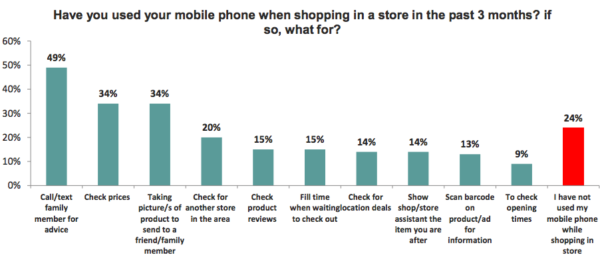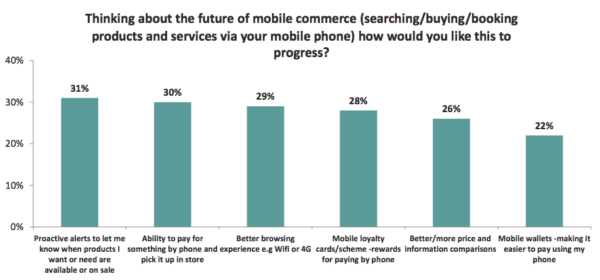IAB Study: Cell Phone Users Welcome Mobile Advertising
According to a new study released by the Interactive Advertising Bureau, mobile advertising is an important driver of smartphone shopping activity and the majority of respondents (70%) found mobile ads as a welcome personal invitation from brands, rather than an invasion. Additionally, when asked why they performed a particular mobile commerce activity, 22% credited mobile […]
According to a new study released by the Interactive Advertising Bureau, mobile advertising is an important driver of smartphone shopping activity and the majority of respondents (70%) found mobile ads as a welcome personal invitation from brands, rather than an invasion.
Additionally, when asked why they performed a particular mobile commerce activity, 22% credited mobile advertising for spurring them on — it was the second highest driver of activity. Half (51%) of respondents said they want the mobile ads they click on to let them browse the brand’s broader product offerings.
IAB and OnDevice Research conducted the study by interviewing 260 smartphone and feature phone users over a two-week period to determine what “a day in the life” looks like. The respondents were chosen with an eye toward gathering a representative sample.
What are people doing on their phones? The most popular activity, reported by 28% of respondents, was finding product or service information. Next (18%) searched for a store location. Comparing prices was the third-most popular activity (12%).
Surprisingly, 47% of mobile phone activity is happening at home, with 29% occurring while people are out and about, and 10% taking place at work. At home, the most popular activity was researching product or service information. However, 11% of price checking happens while people are out in a retail environment. While out and about, the most popular activity was searching for a store location. Twenty-one percent of mobile purchases occur while people are at work.
Use of the mobile phone is usually (64% of the time) occurring while people are doing something else. In order of popularity, people used their phones while they were:
- Watching TV.
- Talking on the phone.
- Using a laptop or desktop.
- Listening to the radio.
- Reading a newspaper.
- Reading a magazine.
The conclusions suggest that people may be using their phones to look up information they’ve noticed in other media, such as researching a product they see in a TV ad or while reading a newspaper or magazine.
In fact, 49% of in-home mobile commerce happens in front of the television, and 13% occurs while people were talking on the phone, perhaps suggesting that they are collaborating with another person to make the purchase decision.
In the retail environment, the most common activity (reported by 49%) was to call another person to talk about the purchase decision. Tied for second were taking pictures of a product to send to a friend (34%, skewing female) and checking prices (also 34%).
Mobile phone usage is resulting in abandoned shopping carts — the real life kind, not the virtual kind. Fifty-three percent of respondents said they stopped a purchase in a retail store because of mobile phone activity, mostly finding a better price online.
When asked about mobile advertising, respondents said they were OK with ads being personalized for them — 30% say they like the personalization and 27% said they were OK with it if they have given permission. More people seemed to welcome advertising personalized based on location, on their favorite brands, and based upon sites they have previously visited online.
Regarding the future of mobile advertising, 31% said they would welcome proactive alerts when products they wanted or needed went on sale. Thirty percent would like to pay for something on their phone and pick it up in the store.
Related stories




